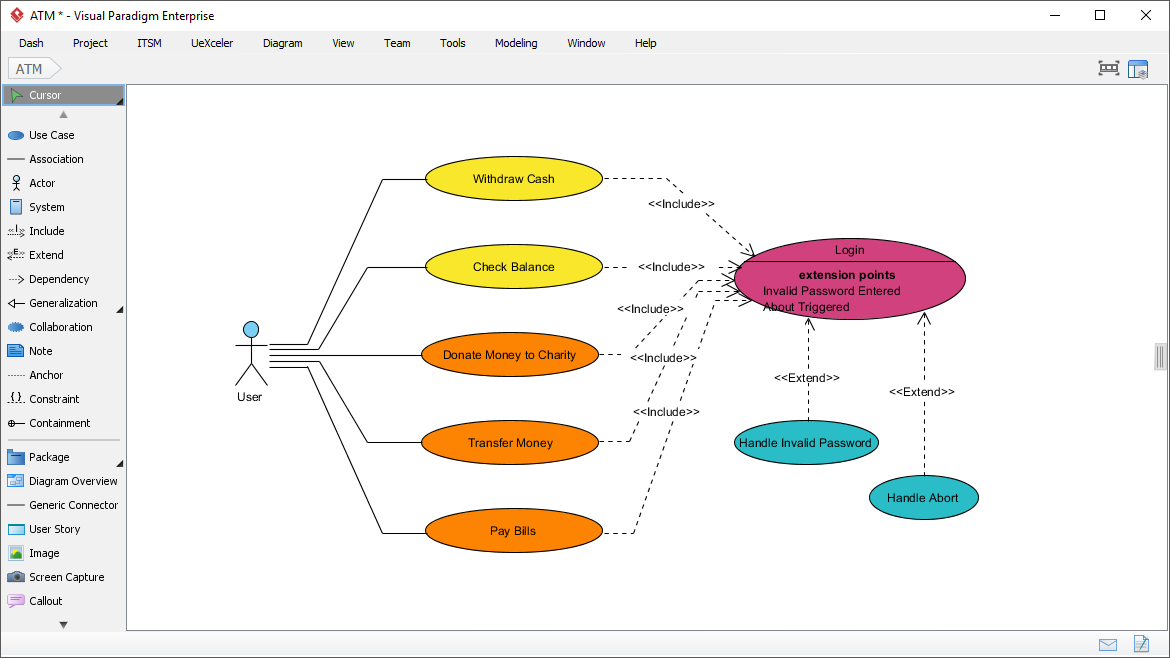Why Use a Use Case Driven Approach?
A use case driven approach is an effective methodology for software development as it focuses on the functional requirements of the system by capturing the user’s goals and intents. It helps to identify, collect, and organize system requirements from the user’s perspective. For our Library Management System (LMS) example, this approach ensures that the system caters to the needs of librarians, staff, and patrons effectively.

When to Use a Use Case Driven Approach?
A use case driven approach is particularly useful in the following scenarios:
- Early stages of software development: It helps to understand user needs and validate requirements before starting the development process.
- Complex systems: For intricate systems like a LMS, where multiple user roles interact with the system, this approach helps to break down the system into manageable components.
- Stakeholder-driven projects: When the project involves multiple stakeholders (like librarians, staff, and patrons), this approach ensures that their needs are considered and met.
How to Implement a Use Case Driven Approach?
Steps
- Identify Actors: Start by identifying the users who interact with the system. For our LMS, actors could be Librarian, Staff, Patron, etc.
- Describe Use Cases: For each actor, describe the goals and tasks they want to achieve using the system. Here are some use cases for our LMS:
- Librarian
- Manage Books: Add, update, delete books.
- Manage Borrowers: Add, update, delete patrons.
- Track Book Status: Monitor book availability, due dates, and renewals.
- Staff
- Process Book Requests: Manage book requests from patrons.
- Update Book Status: Change book status (available, borrowed, lost, etc.).
- Patron
- Search Books: Find books by title, author, or subject.
- Request Books: Place requests for books.
- Renew Books: Extend the due date for borrowed books.
- Librarian
- Create Use Case Diagrams: Visualize the use cases with actors and their relationships. This helps to understand the system’s flow and interactions.
- Detail Use Cases: For each use case, write a detailed description or specification. This includes preconditions, main success scenario, postconditions, and any exceptional flow.
- Prioritize Use Cases: Not all use cases are equally important. Prioritize them based on user needs, project timeline, and resource availability.
Guidelines
- Be User-Centric: Focus on user goals and needs.
- Be Clear and Concise: Use simple, easy-to-understand language to describe use cases.
- Be Complete: Ensure all necessary use cases are included.
- Be Verifiable: Make sure use cases can be tested and validated.
- Be Modifiable: Be prepared to update use cases as requirements change.
Examples
Here’s a detailed description of the ‘Manage Books’ use case for the Librarian:
- Use Case Name: Manage Books
- Actor: Librarian
- Precondition: The librarian is logged in and has admin privileges.
- Main Success Scenario:
- Librarian navigates to the ‘Book Management’ page.
- Librarian selects the ‘Add Book’ option.
- Librarian enters book details (title, author, subject, ISBN, etc.).
- Librarian selects ‘Save’ to add the book.
- The system validates the data and adds the book to the library catalog.
- Postcondition: The new book is available for patrons to search and borrow.
- Exceptional Flow:
- If the book already exists, the system prompts the librarian to update the existing record.
- If mandatory fields are not filled, the system displays an error message.
By following this use case driven approach, we can ensure that our Library Management System meets the needs of its users, is easy to understand, and can be developed effectively.
Recommendation: Visual Paradigm for UML as an Ideal Tool for Use Case Modeling
Visual Paradigm (VP) is a powerful, user-friendly tool for Unified Modeling Language (UML) diagramming, making it an excellent choice for use case modeling. Here’s why VP is an ideal tool for this purpose:
- UML Support: VP fully supports UML, including use case diagrams, which makes it straightforward to create, edit, and visualize use cases and actors.
- Intuitive Interface: VP’s intuitive and easy-to-navigate interface reduces the learning curve, allowing users to focus more on modeling and less on the tool itself.
- Use Case Diagrams: VP provides a dedicated use case diagram template, making it simple to create diagrams with actors, use cases, and relationships. You can:
- Add actors and use cases with simple drag-and-drop.
- Create associations, <<include>>, and <<extend>> relationships between use cases.
- Group use cases into packages or systems.
- Visual Customization: VP offers a wide range of customization options for visual elements, such as colors, fonts, and styles. This allows you to create visually appealing and consistent use case diagrams that align with your project’s branding.
- Real-time Collaboration: VP supports real-time collaboration, enabling multiple users to work together on the same use case model simultaneously. This is particularly useful in agile environments or when working with distributed teams.
- Affordability: VP offers competitive pricing plans, including a free version with basic features. This makes it accessible for both individual users and enterprise teams.
- Community and Support: Visual Paradigm has an active community of users and offers responsive customer support. This ensures you can quickly get help when you need it.
Here’s a simple step-by-step guide to create use case diagrams using Visual Paradigm:
- Open Visual Paradigm and create a new UML project.
- Right-click on the project, select ‘New Diagram’, and choose ‘Use Case Diagram’.
- Drag and drop actors and use cases from the ‘UML Toolbox’ onto the diagram.
- Connect actors and use cases with associations, <<include>>, and <<extend>> relationships.
- Customize the visual elements as desired.
- Save and export your diagram for sharing or documentation purposes.
In conclusion, Visual Paradigm for UML is an ideal tool for use case modeling, offering a user-friendly interface, UML support, and powerful features for creating, editing, and sharing use case diagrams. It’s a valuable addition to any software development toolkit.
Get Started with Visual Paradigm:
- Website: <https://www.visual-paradigm.com/>
- Download: <https://www.visual-paradigm.com/download/>
- Tutorials: <https://www.visual-paradigm.com/tutorials/>

